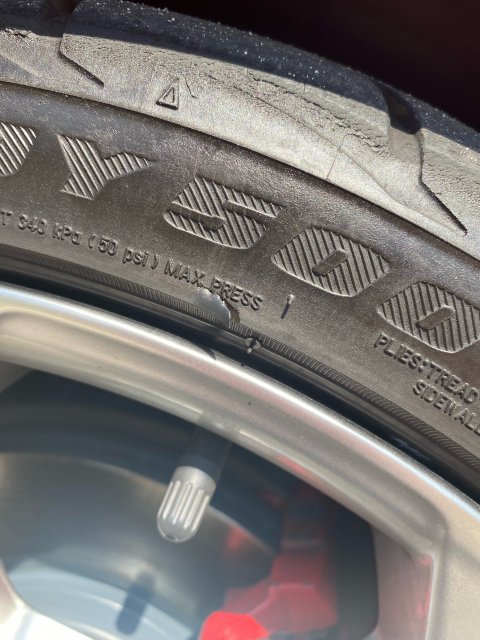I’m going to go against the grain here. Normally I’m a replace all 4 kind of person, and I selectively rotate tires to try and get them all to hit the wear bars at the same time.
The cut in your other tire is in the thick rim
protector area that’s pretty much cosmetic - as long as it hasn’t knicked a belt, it’s probably okay.
at 7-8/32, your tires are so new that you could probably get away with a single new tire, just make sure to put the new Indy 500 (9/32 new) tire on the right front (which tends to wear fastest because torque steer/wheel spin) and the next deepest 8/32 tire on the front driver’s side.
If you monitor the tread depths carefully, in about 5000miles, you’ll have a hard time telling which tire is which.
If that skeeves you out, or you don’t want to spend the time monitoring tread depths, then buy two tires, keep the two with the deepest tread depth.
How bad is the pothole flat tire? If there’s a big cut and belt damage or a sidewall blowout, chuck it. But a tire with intact belts from a small tread puncture (like a nail) can be safely patched and be good as new with an internal patch by a competent tire shop - I usually go to my local race tire shop because they don’t try to - a quality internal tire patch can even be safe for competition use. But don’t put up with an external mushroom or or string plug unless you’re just trying to nurse a tire on its last legs until you can buy a new set.
The other option that someone mentioned above is to buy a new tire and have it shaved to depth which any competition tire shop or other well equipped shop can do using the same equipment that they use to shave the tread down on race tires.
If you don’t live near a good shop, apparently Tire Rack can do it for you for $25-35 a tire if you call or email.
https://m.tirerack.com/tires/tiretech/techpage.jsp?techid=259
But honestly at the near new tread depths you’re listing, you probably don’t need to shave (they typically only guarantee within +\-1/32 of target depth
 .
. .
.
![Wink [wink] [wink]](/images/smilies/wink.gif)